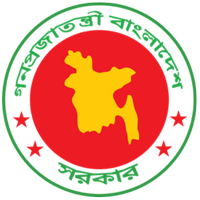EPI Program in Bangladesh: A Success Story of Health Sector in Bangladesh

The Expanded Program on Immunisation (EPI) was launched on 7th April 1979 as a pilot project in eight thanas of the then four divisions of Bangladesh and has since become the most successful program of the government. Initially, EPI provided six conventional vaccines- BCG, DPT, OPV, TT, and Measles. However, the program faced challenges as vaccination centres were limited and predominantly located in healthcare facilities in urban areas, leading to a coverage rate of less than 2% by 1984 [1]. In 1985, the People’s Republic of Bangladesh pledged to the Global Universal Child Immunisation Initiative (UCI) and initiated a phase-wise process to intensify the EPI program from 1985 to 1990. During this period, EPI was intensified throughout 476 Upazila, 92 major Municipalities, and 6 City Corporations. Eventually, by 1990, EPI services were made available to all target populations, including infants and pregnant women [2].
Bangladesh has achieved tremendous progress in eliminating and managing vaccine-preventable diseases [3]. Throughout the past few years, Bangladesh has maintained a high rate of routine vaccination coverage but it is necessary to include numerous children in high-risk and hard-to-reach areas. Vaccinations against HepB, Hib, rubella, PCV, IPV, MR second dose, and fIPV became available in 2003, 2009, 2012, and 2015, respectively. Since the last incidence of wild poliovirus was discovered in 2006, Bangladesh has been declared a Polio-free country by the regional certification committee of WHO South Asia Region on 27th March 2014. Tetanus in pregnant women and newborns was eliminated in 2008. In 2018, Bangladesh also succeeded in controlling the rubella virus. Measles and AFP surveillance is kept at a standard level [4].
In 2008, the WHO verified the eradication of neonatal and maternal Tetanus. The National Immunisation Program made the Hepatitis B vaccination available in 2003, the pentavalent vaccine for Haemophilus Influenzae type B in 2009, and the second dose of the measles, mumps, and rubella (MR) vaccine in 2012 [5]. To prevent specific types of paediatric pneumonia and meningitis, the pneumococcal vaccine was also made available in 2014. Other vaccination alternatives in the following years included the inactivated polio vaccine (IPV), the human papillomavirus (HPV) vaccine, the hepatitis B (birth dose) vaccine, the rotavirus, typhoid, and cholera vaccines, as well as other novel vaccines [6].
The EPI program set priorities and created plans for enhancing coverage in urban, hard-to-reach, and risky areas. The rota and HPV vaccinations will soon be made available, according to government plans. There is ongoing surveillance for other VPDs as well. The government planned to eradicate measles and rubella, preserve the polio-free status, and control other VPDs (such as diphtheria, typhoid, and cholera) by 2020. In this way, the EPI program continues to lead the way in developing vaccines and eradicating diseases.
References
- Sarkar PK, Sarker NK, Doulah S, Bari TIA. Expanded Programme on immunization in Bangladesh: A success story. Banglad J Child Health [Internet]. 2017 [cited 2023 Apr 15];39(2):93–8. Available from: https://www.banglajol.info/index.php/BJCH/article/view/31540/21218
- Baqui AH, McCollum ED, Mahmud A, Roy A, Chowdhury NH, Rafiqullah I, et al. Population-based incidence and serotype distribution of invasive pneumococcal disease prior to introduction of conjugate pneumococcal vaccine in Bangladesh. PLoS One [Internet]. 2020 [cited 2023 Apr 15];15(2):e0228799. Available from: https://pubmed.ncbi.nlm.nih.gov/32053640/
- Ministry of Health and Family Welfare, Bangladesh, EPI Coverage Evaluation Survey (CES), Directorate General of Health Services, 2006, [cited 2023 Apr 15]. Available from: https://old.dghs.gov.bd/images/docs/EPI/CES%20Reports/EPI%20Coverage%20Evaluation%20Survey%202006.pdf
- Immunization in Bangladesh [Internet]. Who.int. [cited 2023 Apr 15]. Available from: http://www.who.int/bangladesh/health-topics/immunization
- Draft version. NATIONAL IMMUNIZATION POLICY [Internet]. Gov.bd. [cited 2023 Apr 15]. Available from: http://nimc.portal.gov.bd/sites/default/files/files/nimc.portal.gov.bd/page/6c53bd88_ad69_4ccf_bbae_d45b70dbc0bf/005%20National%20Immunization%20Policy%20Bangladesh%202013.pdf
- Bhuiyan TR, Islam T, Qadri F. Life-course approach to vaccination in Bangladesh for meeting the health and health-related sustainable development goals: A commentary. J Infect Dis [Internet]. 2021 [cited 2023 May 18]; 224(12 Suppl 2):S749–53. Available from: http://dx.doi.org/10.1093/infdis/jiab455









